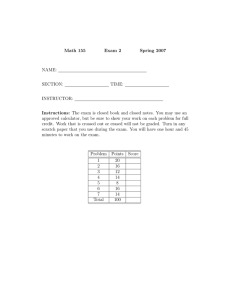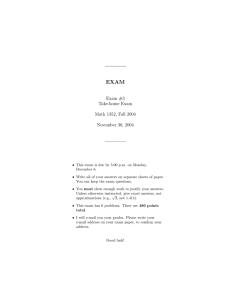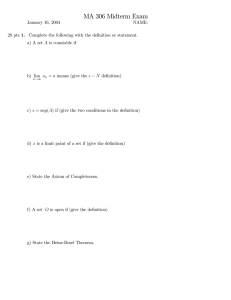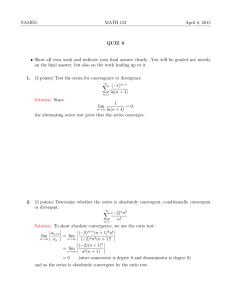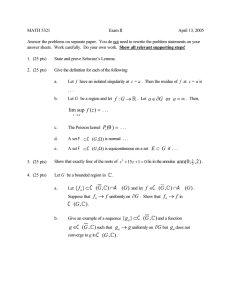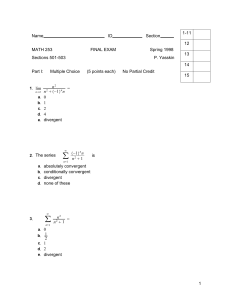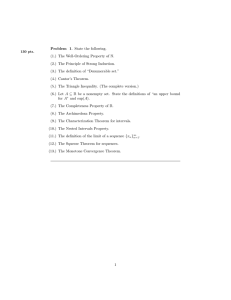EXAM Exam 3, Takehome Exam Math 1352, Spring 2010 April 26, 2010
advertisement
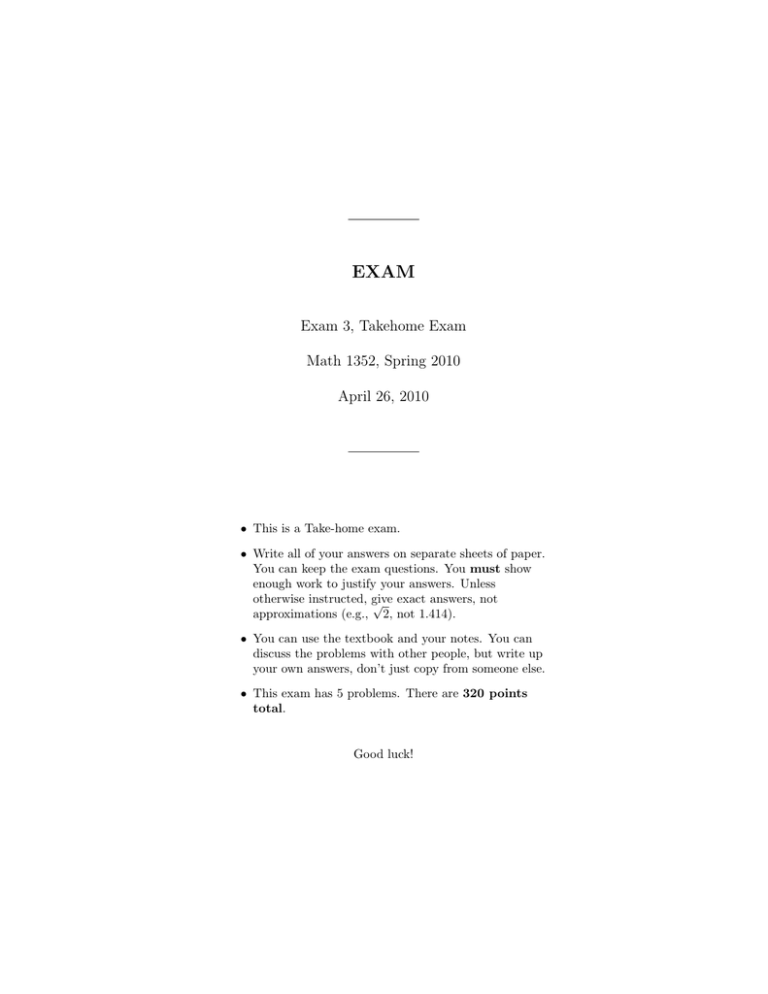
EXAM Exam 3, Takehome Exam Math 1352, Spring 2010 April 26, 2010 • This is a Take-home exam. • Write all of your answers on separate sheets of paper. You can keep the exam questions. You must show enough work to justify your answers. Unless otherwise instructed, give √ exact answers, not approximations (e.g., 2, not 1.414). • You can use the textbook and your notes. You can discuss the problems with other people, but write up your own answers, don’t just copy from someone else. • This exam has 5 problems. There are 320 points total. Good luck! 80 pts. Problem 1. In each part, find the limit of the sequence. Of course, you must justify your answers. A. 3n3 + 4n2 + n + 5 n→∞ 5n3 + 6n2 + 3n + 1 lim B. 7n2 + 2n + 3 n→∞ n3 + 5n + 4 lim C. n2 n→∞ n + en lim D. lim (3n2 + 2n + 5)1/n n→∞ 80 pts. Problem 2. In each part, you are given a series with non-negative terms. Determine if the series converges or diverges. Of course, you must justify your answers. State which test you are using, and show how the test is applied. A. ∞ X n=1 B. ∞ X n=1 C. D. n5 n + 2n + 3 n6 n + n2 + 2 √ 3 √ ∞ X 22n (2n)! n=0 ∞ X 1 n n3 n=1 1 60 pts. Problem 3. In each part, determine if the series is absolutely convergent, conditionally convergent, or divergent. Justify your answers. A. ∞ X (−1)n+1 n=1 B. ∞ X n2 n2 + n + 1 (−1)n+1 √ n=1 C. ∞ X (−1)n+1 √ n=1 60 pts. n n5 +1 n n3 +1 Problem 4. In each part, determine the radius of convergence and the interval of convergence for the power series. If the radius of convergence is finite, determine the behavior of the series at the endpoints of the interval of convergence (i.e., is it absolutely convergent, conditionally convergent, or divergent). Justify your answers, of course. A. ∞ X (−1)n n=0 B. ∞ X (−1)n n=0 C. x2n+1 (2n + 1)! 2n n x n2 ∞ X (−1)n+1 (x − 5)n nn 3 n=1 2 40 pts. Problem 5. A. Find the first 5 terms in the Maclaurin series for f (x) = (1 + 2x)2/3 B. Find the first 5 terms in the Taylor series for f (x) = tan(x), centered at x = π/4. 3

